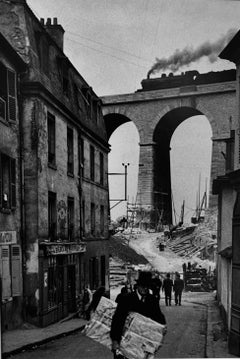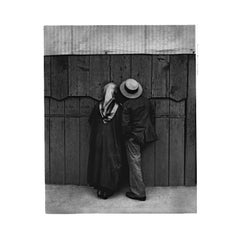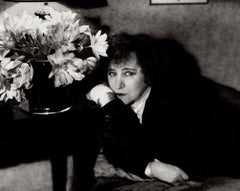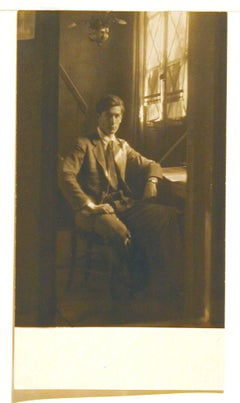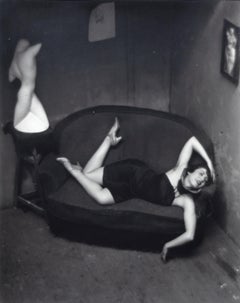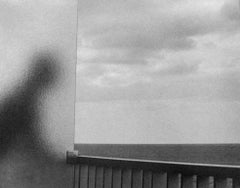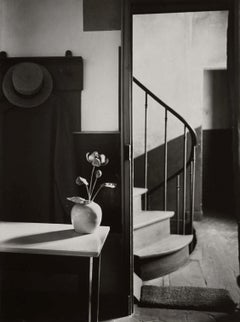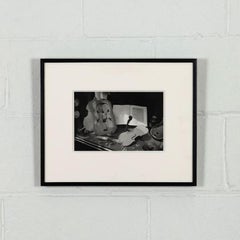Andre Kertesz Photography
Known for capturing the essence of a moment, André Kertész was considered one of the most influential photographers of the 20th Century. He was born in Budapest, Hungary, on July 2, 1894. André Kertész’s pictures of everyday life greatly influenced magazine photography in the United States and Europe as his distinctive style showed generations of photographers how to shoot without intruding in the situation or the emotion of the day. After being severely injured during WWI, he returned to Budapest. Surprisingly, his post-war career initially continued as a clerk in the Budapest stock exchange. Kertész moved to Paris in 1925 to work as a freelance photographer. He soon made friends with some of the leading artists of the time, including Fernand Léger, Marc Chagall and Piet Mondrian. In 1928 he bought a Leica, a small handheld camera which gave him the freedom to move about the streets of Paris. The camera-enabled him to capture spontaneous moments of urban life, a subject that would fascinate him throughout his career. With his Leica and the friendship of these artists, he was able to develop a visual history of Paris. His work appeared in French, Italian and British publications, including prominent magazines and newspapers of the day like the London Sunday Times. At the onset of Hitler's Germany and the specter of war on the horizon, Kertész moved to New York City in 1936 to pursue his career as a photographer. He became a United States citizen in 1944. In 1949 he became a staple with Condé Nast. Alongside Alexander Liberman, Kertész helped to transform and elevate House and Garden magazine into the publication envisioned by Mr. Liberman. Once Kertész retired from commercial work in 1962, his work began to be recognized as Fine art photography. His projects harkened back to his early work in Hungary with street scenes, still-life and the movements of everyday people. Kertész's work is in numerous private and public collections including the Museum of Modern Art, The Art Institute of Chicago, J. Paul Getty Museum, Center for Creative Photography, Smithsonian Institution and Pompidou Center. As per Brassaï’s words, “André Kertész has two qualities that are essential for a great photographer, an insatiable curiosity about the world, about people and life and a precise sense of form." Kertész died in New York City, on September 27, 1985.
20th Century Andre Kertesz Photography
Silver Gelatin
21st Century and Contemporary Andre Kertesz Photography
Silver Gelatin
1930s Andre Kertesz Photography
Silver Gelatin
20th Century Andre Kertesz Photography
Silver Gelatin
1920s Modern Andre Kertesz Photography
Silver Gelatin
1970s Modern Andre Kertesz Photography
Silver Gelatin
20th Century Andre Kertesz Photography
Silver Gelatin
1930s Modern Andre Kertesz Photography
Silver Gelatin
20th Century Andre Kertesz Photography
Silver Gelatin
1920s Andre Kertesz Photography
Silver Gelatin
1970s Andre Kertesz Photography
Color
1930s Andre Kertesz Photography
Silver Gelatin
1920s Andre Kertesz Photography
Silver Gelatin
1960s Andre Kertesz Photography
Silver Gelatin
1970s Andre Kertesz Photography
Silver Gelatin
1940s Andre Kertesz Photography
Silver Gelatin
1960s Andre Kertesz Photography
Silver Gelatin
Early 20th Century Andre Kertesz Photography
Silver Gelatin
Early 20th Century Andre Kertesz Photography
Silver Gelatin
1930s Modern Andre Kertesz Photography
Silver Gelatin
1930s Andre Kertesz Photography
Silver Gelatin
1920s Andre Kertesz Photography
Silver Gelatin
1920s Andre Kertesz Photography
Silver Gelatin
1930s Andre Kertesz Photography
Silver Gelatin
1930s Andre Kertesz Photography
Silver Gelatin
1920s Andre Kertesz Photography
Silver Gelatin
Early 20th Century Modern Andre Kertesz Photography
Silver Gelatin
1960s Andre Kertesz Photography
20th Century Andre Kertesz Photography
1950s Contemporary Andre Kertesz Photography
Silver Gelatin, Photographic Film, Photographic Paper
1960s Modern Andre Kertesz Photography
Silver Gelatin
1970s Pop Art Andre Kertesz Photography
Silver Gelatin
21st Century and Contemporary Contemporary Andre Kertesz Photography
Photographic Film, Photographic Paper, Silver Gelatin
1950s Modern Andre Kertesz Photography
Silver Gelatin
1950s Modern Andre Kertesz Photography
Silver Gelatin
1930s Modern Andre Kertesz Photography
Silver Gelatin, Black and White
1950s Modern Andre Kertesz Photography
Silver Gelatin, Black and White
1930s Modern Andre Kertesz Photography
Silver Gelatin, Black and White
21st Century and Contemporary Contemporary Andre Kertesz Photography
Photographic Film, Photographic Paper, Silver Gelatin
1970s Pop Art Andre Kertesz Photography
Silver Gelatin
1930s Modern Andre Kertesz Photography
Black and White, Silver Gelatin
1920s Andre Kertesz Photography
Silver Gelatin
Late 20th Century Post-War Andre Kertesz Photography
Silver Gelatin
1920s Andre Kertesz Photography
Silver Gelatin
1920s Andre Kertesz Photography
Silver Gelatin
1950s Andre Kertesz Photography
Silver Gelatin
1910s Andre Kertesz Photography
Silver Gelatin
20th Century Andre Kertesz Photography
20th Century Andre Kertesz Photography
Silver Gelatin
20th Century Andre Kertesz Photography
Silver Gelatin
Andre Kertesz photography for sale on 1stDibs.
Artists Similar to Andre Kertesz
- 1stDibs ExpertApril 5, 2022Named as one of the most influential photos of the 20th century, André Kertész’s ‘Underwater Swimmer’ is arguably his best known work. The photo was taken while Kertész was recovering from a gunshot wound from serving in WWI. Shop a selection of André Kertész pieces from some of the world’s top art dealers on 1stDibs.
- 1stDibs ExpertApril 5, 2022Noted photographer Andre Kertesz used many different cameras throughout his career including an ICA box camera, glass plates, 35mm film with a Leica camera and a Polaroid SX-70. His body of work was as ever-changing as his choice of camera, while his reputation continued to grow. Shop a selection of Andre Kertesz pieces from some of the world’s top art dealers on 1stDibs.
